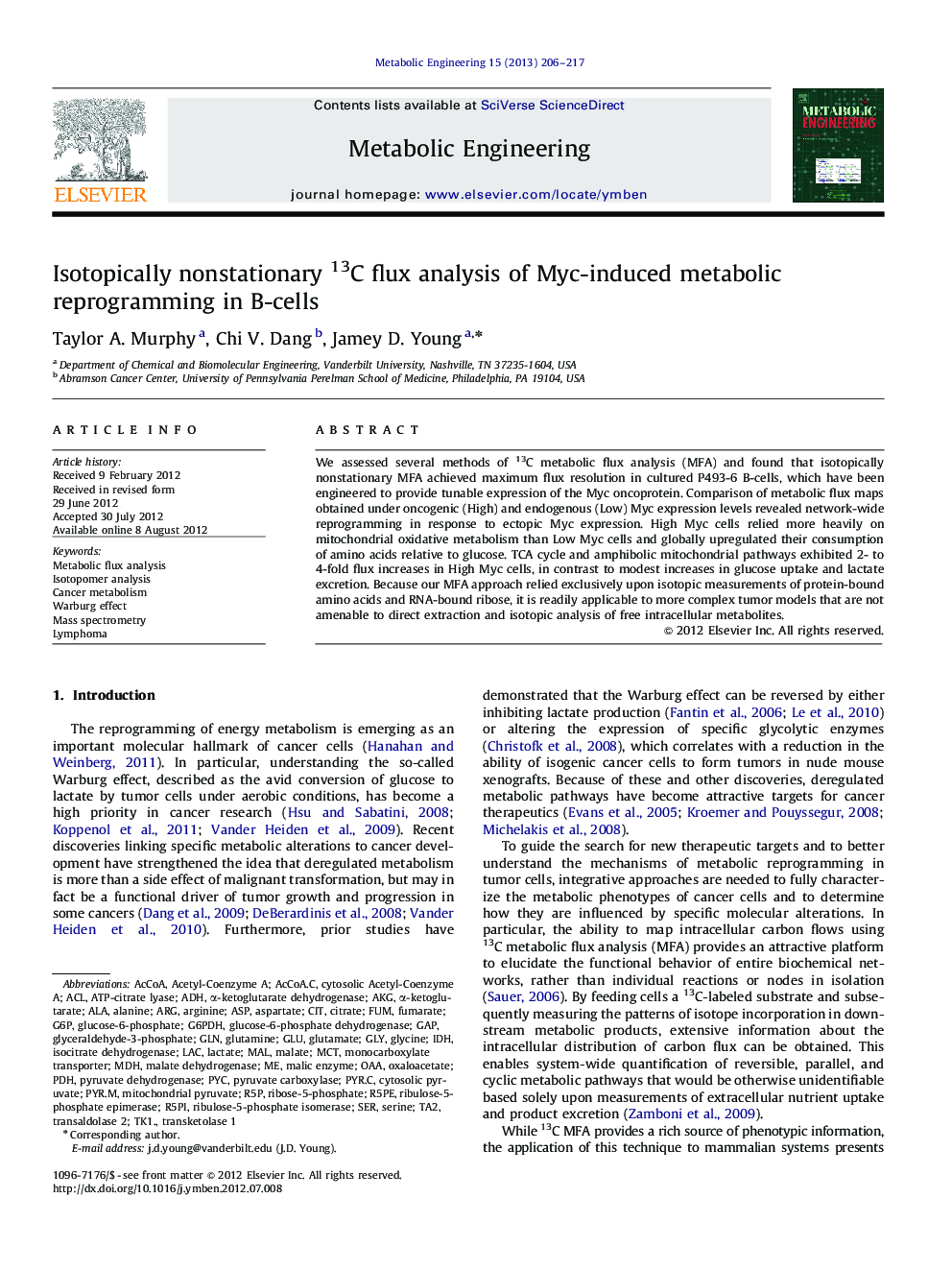| Article ID | Journal | Published Year | Pages | File Type |
|---|---|---|---|---|
| 31664 | Metabolic Engineering | 2013 | 12 Pages |
We assessed several methods of 13C metabolic flux analysis (MFA) and found that isotopically nonstationary MFA achieved maximum flux resolution in cultured P493-6 B-cells, which have been engineered to provide tunable expression of the Myc oncoprotein. Comparison of metabolic flux maps obtained under oncogenic (High) and endogenous (Low) Myc expression levels revealed network-wide reprogramming in response to ectopic Myc expression. High Myc cells relied more heavily on mitochondrial oxidative metabolism than Low Myc cells and globally upregulated their consumption of amino acids relative to glucose. TCA cycle and amphibolic mitochondrial pathways exhibited 2- to 4-fold flux increases in High Myc cells, in contrast to modest increases in glucose uptake and lactate excretion. Because our MFA approach relied exclusively upon isotopic measurements of protein-bound amino acids and RNA-bound ribose, it is readily applicable to more complex tumor models that are not amenable to direct extraction and isotopic analysis of free intracellular metabolites.
► Isotopically nonstationary MFA provided maximum flux resolution in cultured B-cells. ► Flux maps were compared under oncogenic (High) and endogenous (Low) Myc expression. ► High Myc cells relied more heavily on oxidative phosphorylation than Low Myc cells. ► High Myc cells also upregulated their consumption of amino acids relative to glucose. ► MFA approach relied on labeling patterns of hydrolyzed protein and RNA constituents.
